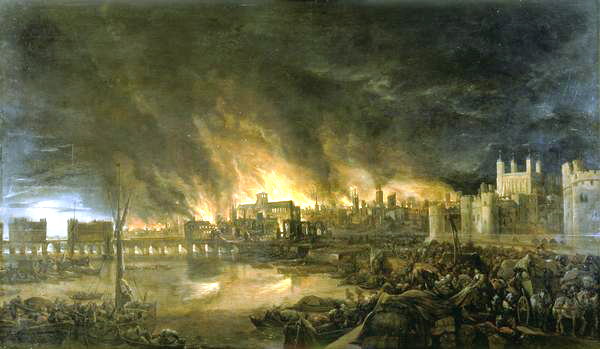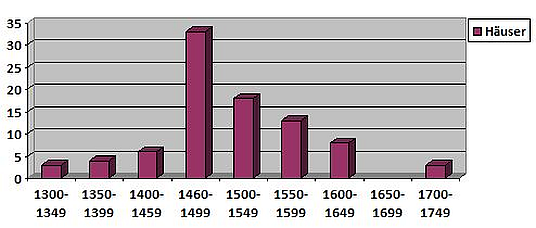Town fires in 's-Hertogenbosch (NL)
Fires often mean caesuras to a cities building history. During the 15th century two big town fires happened in ‘s-Hertogenbosch in a short interval of time, in 1419 and 1463. The first fire trended to the west alongside the Hinthamerstraat, the second fire emerged in the Verwerstraat and trended to the North. Both fires stopped on the central marketplace.
A question addressed to building historians was, how to make it possible to determine these fires and their spatial dimensions using only the historical building stock which has been preserved up to today. In order to be able to answer this question, the Antiquities and Monuments Office of ‘s-Hertogenbosch decided to work together with the dendrochronological laboratory of Pressler GmbH. Thus an amount of 348 samples from 94 buildings/objects has been analyzed. About 94% of the samples could be dated dendrochronologically. As yet no limits of the two town fires could be deduced from the comparison of dating results and object locations. A possible reason for this might partly be the fact that many objects are located widespread all over the city. But even the 21 objects which are situated closely alongside the Hinthamerstraat did not show a clear connection to the town fires.


The oldest objects investigated so far, were erected about 25 years after the town fire happened. The chart below shows a peak at the time of 1460-1499. Astonishingly 16 buildings dating all to 1460-1470 were not erected in Verwerstraat. Only one building in Waterstraat and another building in Kolperstraat seem to be erected as a result of the fire in the adjacent Verwerstraat. This trend continues in the 1470s and 1480s. Ten of eleven buildings were erected in a place, where a spatial connection to the fire cannot be deduced.
Although no limits of the town fires could be determined, the investigation still has been able to show, that the town fires resulted in a big amount of new buildings, which were –like in other cities- erected in a period of time rather short after the catastrophe happened. Possibly this boom of new buildings has been stimulated additionally by subsidies of the administration. In the subsequent years the amount of new built houses slowly goes back to the level of the years before the town fires. For more information, please see the homepage of Antiquities and Monuments Office of ‘s-Hertogenbosch.
Text and graphic: Gemeente 's-Hertogenbosch, Maarten Enderman






